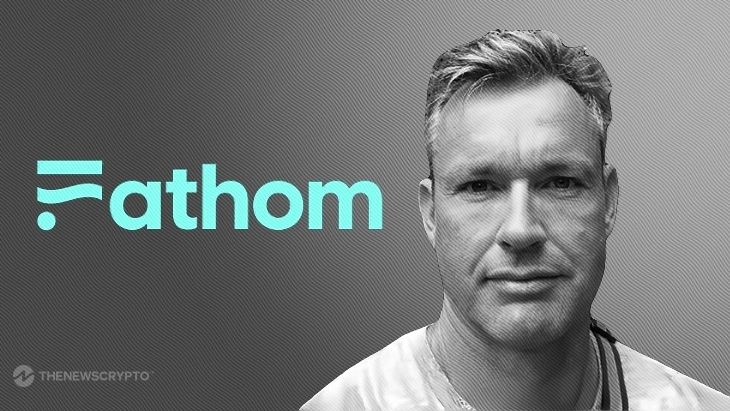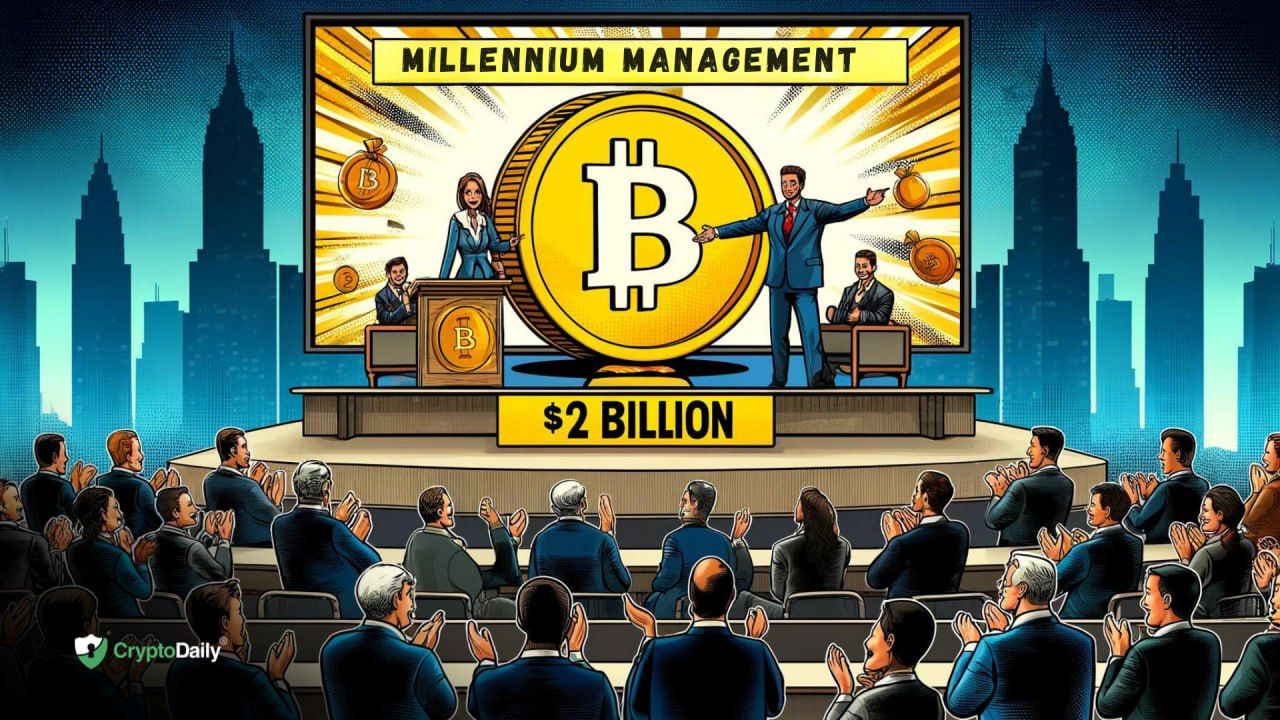

Amid multiple narratives swaying the crypto space, tokenized real-world assets (RWAs) have stolen the spotlight of institutions from the traditional finance (TradFi) scene. These institutional-friendly assets are set to unlock new avenues for investment and liquidity while introducing novel challenges.
TheNewsCrypto recently engaged in a discussion with Manuel Rensink, co-founder of Fathom, a DeFi liquidity management protocol on XinFin’s XDC Network, to understand institutions’ affinity with the crypto-driven RWA ecosystem.
TheNewsCrypto: Could you tell us briefly about your entry into DeFi and the initiation of Fathom in the space?
Manuel Rensik (MR): I entered the realm of DeFi after a diverse journey in traditional finance. Initially, I worked in prominent financial institutions like Chase Manhattan Bank and Deutsche Bank, later joining a JP Morgan spin-off. In 2016, I made a pivotal shift towards crypto. My journey continued with a role at a Swiss crypto exchange, one of the earliest adopters of security tokens. Subsequently, I contributed to Securrency, a pioneering company focused on bringing assets to the blockchain in a compliant manner.
At Securrency, I had the opportunity to collaborate with my co-founder. Together, we worked closely with large asset managers and financial institutions, aiming to tokenize funds and assets onto the blockchain in a compliant manner.
While we tokenized assets like the S&P 500, money market funds, treasuries, and gold, we encountered a significant problem: determining what to do with these assets afterward. Issues ranged from regulatory hurdles to the absence of secondary trading platforms.
Recognizing this gap, my co-founders and I decided to use DeFi, or what we sometimes refer to as institutional DeFi, as a distribution channel for these assets. We explored collateralization methods, allowing these assets to be brought onto the blockchain and enabling users to borrow or lend stablecoins against them. We also explored trading them on decentralized exchanges (DEXs) and integrating them into vaults, automated asset managers, and lending protocols.
TNC: What challenges do you address when it comes to managing liquidity for RWAs within DeFi ecosystems?
MR: During my collaboration with asset managers, particularly American fund managers like WisdomTree, BlackRock, and Hamilton Lane, it became evident that they had been exploring tokenization for some time. Initially, they utilized their own apps or specific marketplaces to distribute assets, especially money market funds.
So the challenge we are currently addressing, and what I believe is the next frontier, is achieving broader distribution across multiple platforms and DeFi protocols. As a result, tokenized real-world assets can serve as collateral for lending smart contracts in Collateralized Debt Positions (CDPs), vaults, liquidity pools, lending protocols, or automated market makers (AMMs) such as Uniswap. This unlocks accessibility on a global scale; anyone with an internet connection can access these assets, albeit some may require an onboarding process and KYC verification. However, these are small technical challenges.
Enhanced accessibility leads to increased utility for these assets, consequently fostering liquidity. Liquidity begets liquidity.
TNC: Institutions are actively embracing the stablecoin market, with the dollar-pegged stablecoin market reaching a significant milestone of $160 billion. What sets $FXD apart from other stablecoins in terms of mechanism and use cases?
MR: Stablecoins are very crucial. Up until the end of last year, they stood out as the only successful tokenized assets, notably USDT and USDC, which essentially tokenize bank deposits, including cash and commercial paper. However, while these stablecoins excel in providing liquidity off-chain, they lack on-chain liquidity support. In contrast, FXD functions as both a mechanism and liquidity protocol. It enables individuals with RWAs to borrow FXD stablecoins, which are over-collateralized by their assets. This allows for various financial activities, including payments, cross-border transfers, trading pairs, and participation in lending protocols.
Moreover, regulatory scrutiny favors stablecoins backed by deposits, potentially placing pressure on USDT and USDC issuers like Circle. In contrast, regulators view FXD-backed stablecoins as non-systemic and crypto-friendly. This regulatory advantage, coupled with its innovative liquidity approach, positions FXD as a more future-proof alternative to USDT and potentially USDC.
TNC: Having surpassed $7 million in TVL, how do you plan to expand your asset portfolio and enhance protocol scalability?
MR: What’s important for us is diversifying the assets backing FXD. Initially, we utilized the XDC protocol token as collateral, ensuring FXD maintains its peg at $1. Despite recent volatility, liquidations have been minimal, and the peg has held steady. However, to grow sustainably and scale effectively, integrating RWAs is vital.
Recently, we passed a DAO vote enabling the onboarding of gold as the second asset type. This includes high-quality gold tokens like ComTech Gold (CGO) on XDC. It is backed one-to-one and redeemable in physical gold in Dubai, under close regulatory oversight. Gold, being the OG of money, presents an exciting addition.
Next, we’re considering tokenized money market funds and credit-like assets, particularly trade finance loans, leveraging XDC’s trade finance focus. These additions will further diversify our asset mix, ensuring the stability and growth of FXD.
TNC: With spot Bitcoin ETFs launched in the U.S. in January and Hong Kong ETFs in late April, Australia’s entry expected by 2024, institutional involvement in crypto is growing. How do you foresee institutions entering and expanding in this space?
MR: It is so good to see traditional finance (TradFi) taking up the financialization of crypto. Particularly, Ethereum has been so important to the DeFi space. Despite the SEC’s lingering threat over Ethereum and its projects in the U.S., it’s reassuring to witness global progress, including China’s involvement.
Conversely, an extremely bullish event is seeing major players like BlackRock launching traditional funds on public blockchains, such as Ethereum, with tokens like BUIDL. Other asset managers, like Hamilton Lane, are leveraging platforms like Polygon and Stellar. These events signify a significant shift, urging asset managers to consider blockchain and DeFi as viable distribution channels. BlackRock’s entry, alongside other notable institutions like WisdomTree, Ark, and Franklin Templeton, highlights the transformative potential of these technologies.
These events stand in contrast to the disasters that happened with FTX, other CeFi and DeFi players, and traditional institutions last year.
TNC: Looking ahead, what valuation do you predict for the RWA ecosystem in the coming years?
MR: The trillion-dollar question indeed. Conversations with people from Citibank and McKinsey, including my friend who heads a think tank there, revolve around estimating crypto’s market size. Crypto remains small compared to traditional bond and equity markets, which are at $120 trillion and $100 trillion respectively. The consensus is that crypto could reach $30-35 trillion in the next five years.
In the shorter term, hitting a couple of trillion in the next two years seems plausible. However, our primary focus lies in scaling TVL (total value locked), which currently stands at $7 million, mainly in crypto assets. We envision this reaching $100 million by year-end.
Disclaimer: The information provided in this interview article is for informational purposes only. It is not intended to be, nor should it be construed as, investment advice, financial guidance, or a recommendation to make any specific decisions. Readers are encouraged to conduct their own research.
Disclaimer: This article is provided for informational purposes only. It is not offered or intended to be used as legal, tax, investment, financial, or other advice.
Read on TheNewsCrypto Investment Disclaimer






